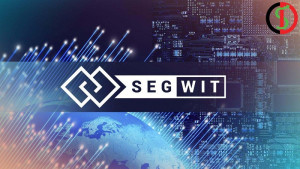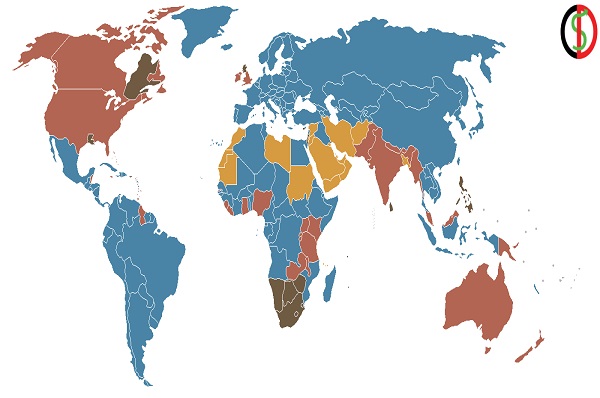SegWit, short for Segregated Witness, is actually a Bitcoin improvement project implemented to solve two main problems. the goal of this soft fork is primarily to provide conditions for securing transaction flexibility and subsequently is a step to increase block capacity in the Bitcoin blockchain network. Currently, the most popular Bitcoin reference client, SegWit was proposed by the Bitcoin core development team and implemented on the Bitcoin blockchain in August 2017. Segwit or Segregated Witness is considered a promising solution for Bitcoin scalability, but is Segwit a reliable solution to improve and improve the scalability of the Bitcoin blockchain? In this article, we’ll take a closer look at the Segwit and how it works.
What is a Segwit?
Segwit is an innovation of the Bitcoin network that changes the way we store information and data. The Segwit idea was first proposed by a developer named Peter Will at the Bitcoin Scalability conference in December 2015. After 2 years, on May 10, 2017, Segwit was first launched on the Litecoin network, and on August 23, 2017, on the Bitcoin network. Many people see Segwit as a solution to the Bitcoin network’s scalability problem. In the main protocol, the maximum block size is 1 MB. Because of this, the number of transactions that the Bitcoin network can process per second is limited to around 7 transactions. This will stop the potential growth of the Bitcoin network and prevent it from becoming a payment system with a large volume of transactions.
How does a Segwit work?
Now that you know how Bitcoin transactions and their blockchain block system work, and the problems that arise as a result of these situations, it’s time to see how Segwit solves this problem. Segwit increases the size of the block by separating the information related to the digital signature from the transactions, so its name is derived from the words Segregate, which means to separate, and evidence, which means to confirm or sign. Thus Segwit hit two targets with one arrow; The block space became empty and the transaction flexibility issue was resolved. SegWit transfers the signature data of the input data section to a separate section at the end of the block, thus making it much easier to calculate the ID of the transaction, thus preventing flexibility attacks.

Segwit not only removed this fundamental problem from the path of Bitcoin but also paved the way for a second-layer scale solution. One such solution was the Lightning Network. With the withdrawal of large transaction volumes from the main chain and off-chain processing, the network capacity is greatly increased.
What wallets and exchanges does Segwit support?
Since Segwit was implemented on the Bitcoin network, many wallets have supported it over the years. On the other hand, the number of Segwit-compatible exchanges is increasing day by day. If you use wallets and exchanges that support bech32 addresses, you will pay fewer fees for your transactions. List of wallets that support Segwit:
- Ledger Nano S
- Trezor
- Electrum
- Coinomi
- Coinbase
- BitGo
- GreenAddress
- Trust Wallet
- BitBox
- Exodus
- Samourai Wallet
List of exchanges that support Segwit
- Gemini
- Kraken
- LocalBitcoins
- Bitstamp
- Bitfinex
- Bitonic
- HitBTC
Purposes of the Segwit
Segwit’s original purpose was not to increase the Bitcoin network’s block space; Rather, its main goal was to increase the flexibility of transactions. That is if the user changed the transaction in the network block before it. Post ID permanently changed. This creates a whole new transaction on the blockchain, which wastes a lot of time and space. With the introduction of SegWit, transaction signatures were stored in a separate part of the transaction. Therefore, any change by the user; It is applied to the signature part of the transaction, leaving the original transaction unchanged. This update makes transactions more flexible and each block takes less volume.
In pre-Segwit blocks, transaction signatures occupy more than 60% of each block. Also, the total size of each block is equal to 1 MB. By adding this script to Bitcoin Core, the transaction signature was separated from the original data. Therefore, the total volume of the block is increased. Currently, each new block is equivalent to 4 megabytes of storage space.
What are the advantages of a Segwit?
Since the number of Bitcoin users has increased so much recently, Bitcoin transactions take much longer than usual. This is due to the usual capacity constraints that affect network speed. The block size limit was also a point of contention. However, by separating the signature information as a separate block, more block space will be saved and thus more transactions can be processed per block. The Segwit plan also has the following benefits.
1.Improvements related to transaction flexibility
Transaction flexibility is where the transaction identifier can be changed by changing the code information. Basically, when a transaction is sent to the network, all other nodes can change the transaction ID before sending it to the next node. This can be a little annoying for users who are tracking their transactions. In Segwit, transaction data does not include signature information, so no node can change the transaction ID. This makes the transaction secure. This benefits anyone who makes an unverified transaction. Most importantly, however, it lays the groundwork for the implementation of the Lightning Network.
2. Increased security for multi-signature transactions
The current security method for multi-signature transactions is P2SH, which uses a 160-bit hash function.. Using incredibly powerful computing resources, an attacker can find the link between the correct address as part of a multi-signature script and the script that transfers all the money to them. Using Segwit, script payments are hashed with the 256-bit SHA256 algorithm. This means that the risk of collision for any attack on multi-signature payments is significantly reduced. This is also very useful for the person paying through a multi-signature or smart contract.
✅Conclusion
Segwit or Segregated Witness is a soft fork that solves problems such as volatility and increasing block size by changing the Bitcoin structure. By transferring the document associated with the digital signature outside of the transaction, this scheme improves processing speed and increases the number of transactions per block of the blockchain network.




